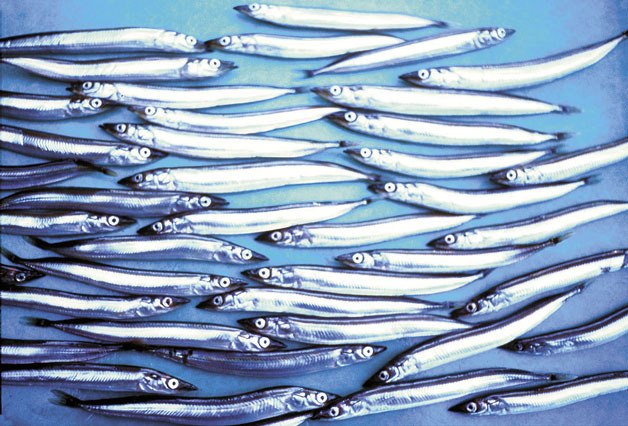It was an egg hunt that came up empty.
And Port of South Whidbey officials are thrilled.
The port district has spent the past four months inspecting the sand at the Langley Marina boat ramp for Pacific Sand Lance eggs — so small they blend in with grains of sand — before the buried ramp could be cleared for boaters.
The search for the next generation of sand lance, also called candlefish, has cost the port time and money. But state officials say sand lance are vital for the survival of salmon and other important marine life, so sand sample tests must be completed before sand can be removed from the port’s facilities.
The extra time and procedures have added costs to the regular cleanups. Samples were taken near the boat ramp and inspected in Port Townsend for any eggs or spawn.
Port Manager Ed Field said the cost of testing added about $300 to each ramp cleaning, which is necessary for boat trailers to unload boats into Saratoga Passage.
“It about triples the cost of a ramp cleaning,” Field said.
Sand lance, though not endangered, are an important food for salmon and seabirds in Puget Sound. The state Department of Ecology reports that 35 percent of juvenile salmon diets consist of sand lance, and the rate is even higher among juvenile chinook, at 60 percent.
“They’re somewhere near the foundation for other species,” said Craig Bartlett, a spokesman with the Department of Fish and Wildlife.
The tiny fish, between 5- and 8-inches long at adulthood, lay their eggs in sandy-gravel beaches all over Puget Sound, and there are 140 miles of known spawning beaches.
Despite being an integral part of the food chain around Western Washington and beyond, the sand lance’s breeding habits were a recent discovery in 1989 and are neither a state nor a federally protected species.
“Just about anywhere you go on Puget Sound beaches, there are sand lance spawning areas,” Bartlett said. “We don’t have a good idea of what the populations of sand lance are, which is usually required for an endangered species status.”
Recreational boating was out of season during the inspection period that lasted from November until February.
Even so, clearing the ramp of sand buildup was important during the winter, Field said, because commercial boats and South Whidbey Fire/EMS use the ramp to access Saratoga Passage.
“Even during the winter, there are some commercial boaters that use the ramp,” Field said. “It’s an essential public facility.”
The port worked with the Department of Fish and Wildlife on the testing and cleanup procedure. Had there been any eggs, the port would not have been allowed to clean the ramp with a backhoe.
Originally, the Port of South Whidbey was on a longer inspection period that was to begin in mid-October until mid-March, but that plan was reduced to last only from November until mid-February.
Washington state regulates construction and building activity near freshwater and saltwater areas, and the regulations were created to protect marine species, including the sand lance, Bartlett said.
“In this case the concern is destroying spawning habitat and destroying the eggs that are laid in the beach,” he said.
After tests showed there were no eggs, the port had one week to use a backhoe to clear the ramp. Cleanings are usually done at least twice a month at the boat ramp.
Sand testing in Langley is coming to an end, Field said. The most recent sand removal was Friday, Feb. 10, and Field said he hopes that will be enough until the current inspection period ends next month.
Boating season begins once weather improves, but officially starts the first Saturday in May.
This year, boating season opens Saturday, May 5.



